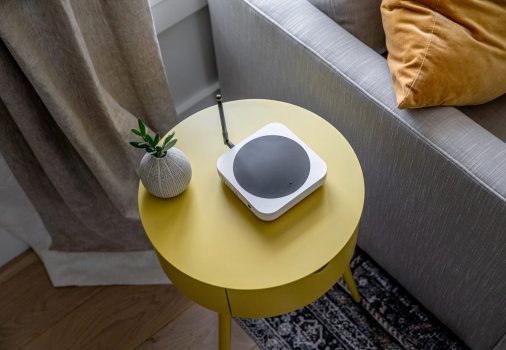Earlier this month, Andreessen Horowitz announced it was part of a $111 million investment in Helium. But the facts of the deal were a bit murky. The money from Andreessen was an investment in Helium Network Tokens (HNTs), not an investment in the company. However, Helium did wrap a small, undisclosed bit of outside funding from other investors into that news.
Frank Mong, the COO of Helium, told me the funding that went to the company was “insignificant,” and was raised in an earlier deal. However, he was quick to point out that the Andreessen investment in the Helium tokens was a big validation for the style of decentralized peer-to-peer network that Helium is building.
In my conversation with Mong, we spent a lot of time discussing Helium’s plans for a 5G network, which follows a similar model as its existing LoRa Wide-Area Network. Helium has turned the construction of a physical network for the IoT on its head. Instead of deploying its own gear across the country and managing the network, it has built a peer-to-peer network that rewards people who run their own hotspots with HNTs.
People install a Helium-certified hotspot that uses their home’s Wi-Fi network as backhaul to the internet. The hotspot provides the LoRa coverage and also generates HNTs whenever the hotspot supplies proof that it’s still part of the network, as well as when a Helium customer transfers data on the network. The beauty of the system is that the rise in the value of HNTs offers an incentive for people to use their broadband to provide backhaul and their home as the equivalent of a LoRa “tower.”
Continue reading: https://staceyoniot.com/heliums-investment-and-5g-plans-explained/
Frank Mong, the COO of Helium, told me the funding that went to the company was “insignificant,” and was raised in an earlier deal. However, he was quick to point out that the Andreessen investment in the Helium tokens was a big validation for the style of decentralized peer-to-peer network that Helium is building.
In my conversation with Mong, we spent a lot of time discussing Helium’s plans for a 5G network, which follows a similar model as its existing LoRa Wide-Area Network. Helium has turned the construction of a physical network for the IoT on its head. Instead of deploying its own gear across the country and managing the network, it has built a peer-to-peer network that rewards people who run their own hotspots with HNTs.
People install a Helium-certified hotspot that uses their home’s Wi-Fi network as backhaul to the internet. The hotspot provides the LoRa coverage and also generates HNTs whenever the hotspot supplies proof that it’s still part of the network, as well as when a Helium customer transfers data on the network. The beauty of the system is that the rise in the value of HNTs offers an incentive for people to use their broadband to provide backhaul and their home as the equivalent of a LoRa “tower.”
Continue reading: https://staceyoniot.com/heliums-investment-and-5g-plans-explained/

